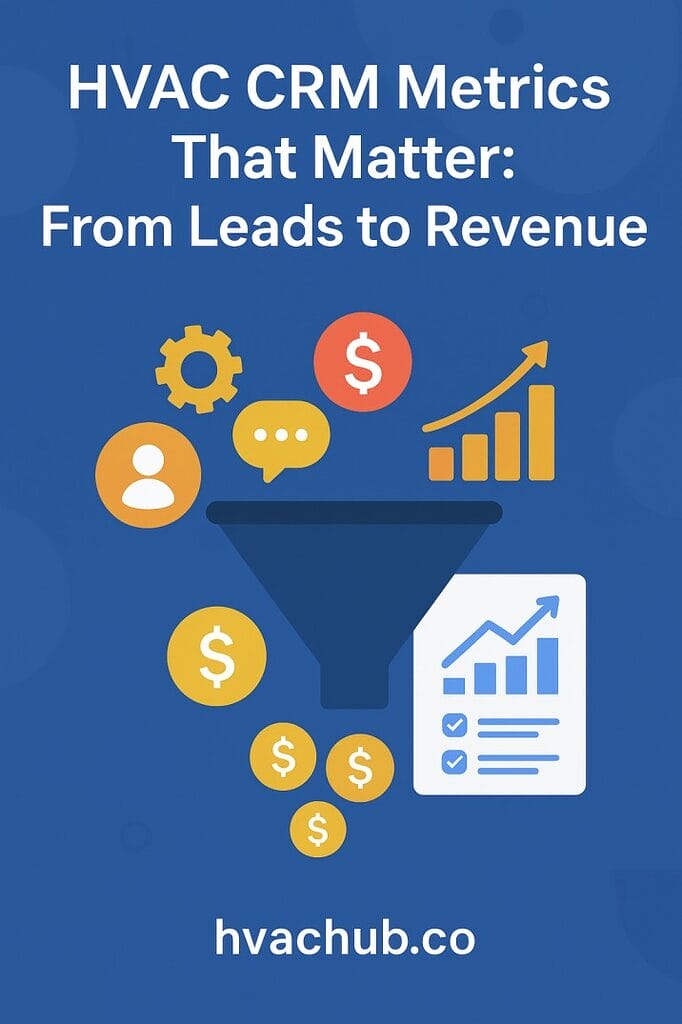HVAC CRM Metrics That Matter: From Leads to Revenue
In the HVAC industry, what gets measured gets optimized. Tracking the right HVAC CRM metrics allows you to understand your leads, improve conversions, and maximize revenue. Without these insights, opportunities slip through the cracks, and marketing efforts can fall short. In this guide, we’ll explore the most important CRM metrics every HVAC business should track to turn data into results.

Key Metrics That Drive Revenue
1. Lead Source Performance
Knowing where your leads originate-whether from your website, referrals, or ads-helps you focus on channels that deliver the best results. Track the number of leads per source and their conversion rates to optimize marketing spend effectively.
2. Conversion Rate
Conversion rate measures the percentage of leads that become paying customers. By monitoring this key HVAC CRM metric, you can identify bottlenecks in your sales process and improve follow-ups to close more jobs.
3. Customer Lifetime Value (CLV)
Customer Lifetime Value shows how much revenue a client generates over time. Tracking CLV helps HVAC businesses understand the long-term impact of repeat business, maintenance contracts, and upsells.
4. Average Response Time
Fast response times improve lead conversions and customer satisfaction. Monitor how quickly your team responds to inquiries or service requests to ensure clients don’t go elsewhere.
5. Missed Opportunities & Lost Leads
Not every potential customer books immediately. Track missed opportunities and lost leads using your CRM. Then, trigger automated campaigns to re-engage these clients, turning lost chances into revenue.
6. Revenue per Campaign or Channel
Measure how much revenue each marketing campaign generates. This HVAC CRM metric shows which campaigns or channels deliver the highest ROI and helps you allocate resources wisely.
7. Customer Retention & Repeat Business
Retaining clients is more cost-effective than acquiring new ones. Track retention rates and set up automated reminders for maintenance, inspections, or seasonal check-ups to increase repeat business.
How to Optimize HVAC CRM Metrics
- Automate reporting for real-time insights.
- Use dashboards to monitor lead sources, conversion rates, and revenue.
- Trigger automated follow-ups for inactive leads.
- Regularly review campaigns and adjust strategies based on results.
Real-World Example:
A HVAC company noticed 40% of their website leads weren’t converting. By tracking HVAC CRM metrics, they identified slow response times as the main issue. Automating SMS confirmations and follow-ups improved conversions and boosted revenue by 25% in three months.
Tracking the right HVAC CRM metrics turns raw data into actionable insights. From lead generation to revenue tracking, these metrics provide opportunities to optimize performance and grow your HVAC business efficiently.
Please join our HVAC Community Hub for more insights, tools, and strategies to track your metrics and grow your business.

Responses